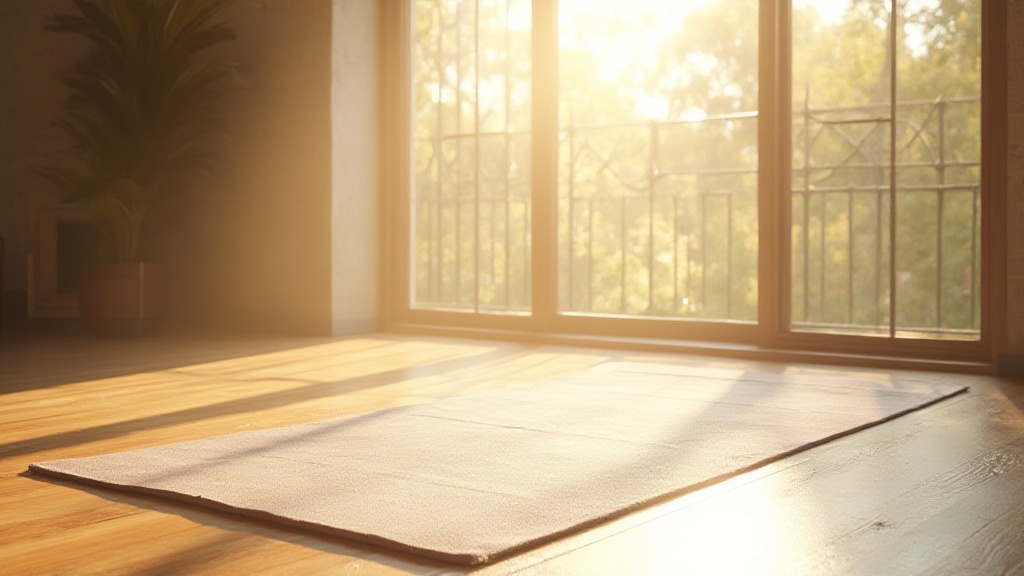
Flexibility plays a critical role in enhancing physical health and overall well-being. Engaging in daily stretching exercises effectively improves flexibility, significantly lowering the risk of injury.
These exercises promote better posture and enhance mobility, making everyday activities easier.
Incorporating a stretching routine into your fitness regimen yields remarkable benefits.
This article explores how consistent stretching contributes to muscle recovery and improved range of motion, alongside practical tips for integrating stretching routines into your daily life.
Benefits Of Daily Stretching For Flexibility
Daily stretching serves as a foundation for boosting physical capabilities.
Individuals who incorporate these exercises experience improved muscle pliability and enhanced athletic performance. Regularly performing stretching routines supports muscle recovery, helping to alleviate tension and improve recovery time.
To start, aim to dedicate 10 minutes each day to focused stretches.
Gentle stretches for major muscle groups, such as the hamstrings, quadriceps, and shoulders, lead to noticeable improvements in flexibility. Consider the following routine:
- Hamstring stretch
- Quadriceps stretch
- Shoulder stretch
Daily stretching not only enhances flexibility but also contributes to overall health and wellness.
With consistency in daily stretching exercises, you will observe significant benefits that enhance your overall fitness journey.

How Stretching Improves Mobility
Stretching is fundamental for improving mobility, directly linking to previously discussed mobility-enhancing techniques. An increased range of motion significantly influences daily activities, facilitating easier bending, reaching, and walking.
Enhanced mobility is essential for overall health and can contribute to superior physical performance.
A practical stretching sequence to boost flexibility includes:
- Neck Stretch: Gently tilt your head side to side.
- Shoulder Rolls: Roll shoulders forward and backward to relieve tension.
- Chest Opener: Interlace fingers and stretch hands upward to expand the chest.
- Hip Flexor Stretch: Lunge forward to stretch the hips effectively.
- Hamstring Stretch: Sit on the floor and reach for your toes to elongate the back of the legs.
Incorporating these stretches into your routine can significantly enhance overall mobility and support muscle recovery.
Creating A Daily Stretching Routine
A personalized daily stretching routine can greatly enhance mobility and flexibility. Start by assessing your individual flexibility and mobility limitations through a personal log. This practice can help identify specific areas requiring focus. Recommended stretching schedules might include:
- Morning Stretch: Energizes the body and prepares it for the day.
- Post-Workout Stretch: Facilitates muscle recovery after physical activity.
- Evening Stretch: Promotes relaxation and reduces stress before bedtime.
Consistency is vital; set achievable goals and track your progress to foster adherence to this stretching routine long-term. Creating a supportive environment can enhance the effectiveness of this wellness practice.
Stretching and Mobility
- Regular stretching can increase flexibility by up to 20%, enhancing overall mobility.
- Studies show that a consistent stretching routine can reduce the risk of injury by improving muscle elasticity.
- Incorporating stretching into your daily routine can improve posture and alleviate back pain.
- Engaging in stretching exercises has been linked to improved athletic performance, including faster sprint times and better agility.
Essential Stretching Techniques For Muscle Recovery
Incorporating a stretching routine significantly enhances muscle recovery after exercise. Research confirms that stretching promotes blood flow, thereby improving oxygen delivery to muscles and effectively reducing soreness.
This physiological process aids in breaking down lactic acid buildup, which commonly occurs during intense workouts.
Specific techniques, such as static stretching, involve holding stretches for 15-30 seconds, concentrating on muscle groups like the hamstrings and quadriceps.
Alternatively, dynamic stretches consist of gentle movements, including arm circles and leg swings, which can effectively warm up muscles after exercise.
Injury Prevention Through Regular Stretching
Implementing a stretching routine contributes to injury prevention and overall health. Enhancing flexibility not only improves joint range of motion but also lowers the risk of injuries during physical activity.
Research indicates that individuals with greater flexibility experience fewer injuries. The following checklist includes effective stretches for common injury sites: for the lower back, consider the Child’s Pose and Seated Forward Bend; for the shoulders, incorporate the Cross-Body Shoulder Stretch and Overhead Triceps Stretch; and for the hips, try the Butterfly Stretch and Hip Flexor Stretch.
Regular practice of these stretches fosters mobility and enhances athletic performance.
| Benefit | Technique | Duration | Target Area |
|---|---|---|---|
| Improves muscle recovery | Static Stretching | 15-30 seconds | Hamstrings, Quadriceps |
| Enhances flexibility | Dynamic Stretching | Varies | Overall body |
| Reduces injury risk | Child’s Pose | 15-30 seconds | Lower Back |
| Improves joint range of motion | Cross-Body Shoulder Stretch | 15-30 seconds | Shoulders |
Incorporating Relaxation Into Your Stretching
Effective stretching practices can significantly enhance relaxation, ultimately improving your overall fitness. Mindfulness during stretches allows individuals to focus on their body’s sensations, leading to better tension relief.
Breath awareness is essential; techniques such as diaphragmatic breathing and the 4-7-8 breathing technique support deeper relaxation.
Incorporating these breathing methods while stretching promotes a calming atmosphere, facilitating improved mobility and muscle recovery.
- Mindfulness enhances body awareness, optimizing the stretching routine.
- Deep breathing fosters relaxation, reducing stress and promoting wellness.
The Role Of Stretching In Overall Health
A comprehensive approach to stretching offers benefits that extend beyond mere flexibility, positively affecting both mental and physical well-being. Regular stretching routines contribute to enhanced mental clarity and reduced anxiety levels since physical activity stimulates endorphin release. Integrating these practices into daily life can help maintain muscle pliability and prevent injuries. Consistently committing time to stretching fosters a balanced health regimen that supports overall health and promotes an active lifestyle.
Holistic Benefits of Stretching
Stretching is not merely for flexibility; it plays a critical role in posture correction and injury prevention. Engaging in a variety of stretching techniques, including dynamic stretches and static stretches, improves range of motion across various muscle groups.
Integrating stretching into your routine enhances physical activity and overall performance.
Seamless Integration into Daily Routine
Daily stretching practices can seamlessly fit into your existing fitness routine. Setting aside time for gentle stretches as part of your warmup or cooldown enhances recovery techniques while promoting tension reduction. Tools such as a foam roller or engaging in yoga classes may also enhance the effectiveness of your stretching.
- Stretching improves overall wellness through consistent practice.
- Incorporating guided stretching via online classes or fitness apps can provide structure to your routine.
Stretching and Relaxation
- Studies show that incorporating mindfulness into stretching routines can enhance relaxation and reduce stress levels.
- Regular stretching has been linked to improved mental clarity and reduced anxiety, thanks to the endorphin release during physical activity.
- Dynamic and static stretching techniques can significantly improve range of motion and posture, contributing to better overall physical health.
- Utilizing tools such as foam rollers and participating in yoga can enhance the effectiveness of stretching and recovery practices.
Effective Stretching For Postworkout Recovery
Postworkout recovery is essential for enhancing overall fitness. Stretching serves as a critical recovery technique that can significantly reduce recovery timelines by promoting muscle recovery and relieving tension.
Implementing a structured stretching routine after exercise not only aids in decreasing delayed onset muscle soreness (DOMS) but also enhances flexibility and range of motion.
A focused stretching strategy engaging key muscle groups can optimize the benefits of your workout while improving muscle pliability.
Benefits of Stretching in Recovery
Stretching contributes to various aspects of postworkout recovery.
By incorporating stretching into your routine, you can achieve:.
- Tension Relief: Gentle stretches help in alleviating muscle tightness.
- Improved Flexibility: Regular stretching enhances your range of motion.
- Posture Correction: Stretching promotes better body alignment, reducing strain on muscles.
Targeted Postworkout Stretching Routine
A targeted postworkout stretching routine can maximize recovery benefits. Consider the following stretches:.
- Upper Body: Include shoulder and tricep stretches to enhance upper body flexibility.
- Lower Body: Incorporate quadriceps and calf stretches to improve lower body mobility.
- Core: Add seated forward bends and cat-cow stretches to promote core strength and relaxation.
Connecting stretching to hydration and nutrition completes an effective recovery routine. This approach ultimately leads to improved athletic performance and overall health.
Postworkout Stretching
- Studies show that stretching can reduce DOMS by 30% when performed after workouts.
- Regular stretching has been linked to a 20% increase in overall flexibility over time.
- Improved posture from stretching can lead to a 15% reduction in muscle strain during daily activities.
- Hydration and nutrition combined with stretching can enhance recovery speed by up to 25%.
